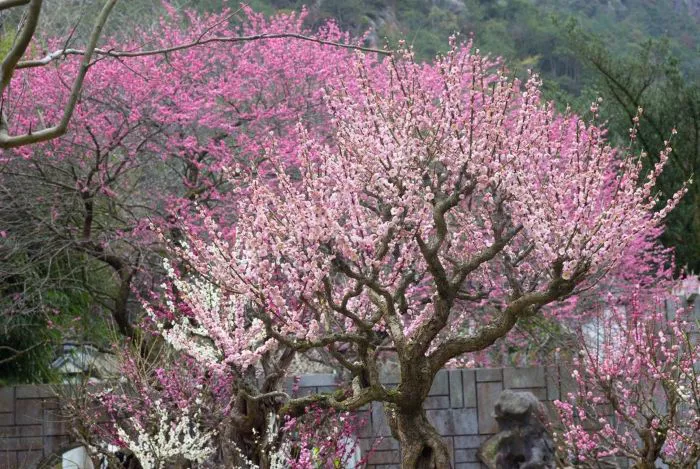Hundreds of plum trees in full bloom have transformed Huangyan District’s Jiufeng Park into a fragrant paradise, drawing crowds of visitors eager to witness the annual spectacle. The intermingling of red, white, and wintersweet blossoms against traditional Chinese architecture creates a scene straight from classical poetry.
Living Artistry in Baichun Garden
The park’s prized plum bonsai collection, cultivated since the 1960s, has become a must-see attraction. Featuring over 30 varieties renowned for their gnarled, ancient forms, these “naturally twisted” specimens have won national acclaim. Master bonsai artist Pan Zhonglian praised them as “unrivaled in China,” while late plum expert Chen Junyu declared them “a wonder to the world.”
Millennium of Cultural Blooms
Established during the Song Dynasty’s Kaibao era (968-976 AD), the 1,000-year-old park originally served as the Ruilong Buddhist Temple. Nestled among nine peaks with flowing streams and ancient trees, its poetic setting has inspired scholars since the Southern Song Dynasty, when poets like Dai Fugu and Li Qingzhao composed verses celebrating its plum blossoms.
Enduring Floral Traditions
The park continues a centuries-old custom of seasonal flower appreciation. What began as a ten-mile plum blossom route along official roads during the Song Dynasty now manifests in two annual rituals: autumn osmanthus viewing and winter plum blossom walks, cherished traditions that still captivate locals today.
Related Topic:
- African Travel Debuts Luxury Concierge Safaris for 2025
- Is Indonesia’s Travel Advisory Warning Travelers Away from Certain Regions?
- Croatia Launches First Electric Battery Train, Boosting Rail Sustainability

